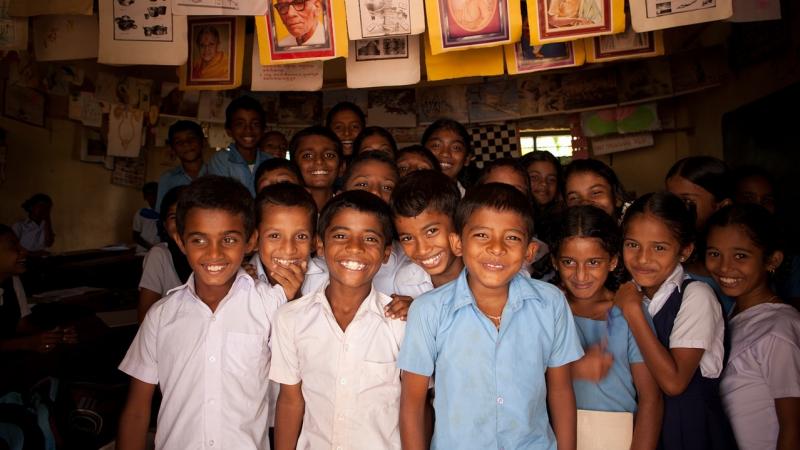One in eight kids in India has at least one neurodevelopmental disorder, finds study

Written by Baheerathan M Published by neucradhealh on February 21, 2019
As humans, we are revered for our intellectual abilities, cognitive skills like memorising, reading, writing and for performing focused tasks like music, sports and driving. As we grow, our brain develops structural pathways in response to learning and experiences, which gives us these abilities. However, a small disruption in this dynamic process could lead to a range of disorders, collectively called neurodevelopmental disorders. Environmental and genetic factors play a significant role in the development of these disorders and children, particularly from low-income communities around the globe, are at a higher risk of developing them.
Despite being one of the world’s most populous country, India never had the data to estimate the prevalence of neurodevelopmental disorders until recently. Now, a nationwide collaborative study has found that one out of eight children, between two and nine years, has at least one neurodevelopmental disorder. Worse still, less than 1% of them are under any treatment. The study involved experts from 53 institutions and was headed by the INCLEN Trust International, New Delhi. The findings of the study were published in the journal PLOS Medicine.
“Almost one in eight children below the age of ten years have at least one neurodevelopmental disorder and about one-fifth of these children have two or more such disorders. However, almost 50% of the risk factors for these disorders are modifiable and this, in turn, shall reduce their occurrence”, says Prof. N.K Arora from The INCLEN Trust, who is the lead author of the study, talking about their findings.
The researchers assessed 3964 children across India aged between two and nine years. Among those who were below six years of age, they checked for disorders like vision impairment, epilepsy, neuromotor impairments like cerebral palsy, hearing impairment, speech and language disorders, autism spectrum disorders and intellectual disability. They further assessed attention deficit hyperactivity disorder and learning disorders in children aged between six and nine years. The children who were studied came from five geographically diverse regions— North-Central (Palwal, Haryana), North (Kangra, Himachal Pradesh), East (Dhenkanal, Odisha), West (North Goa) and South India (Hyderabad, Telangana).
“India is a big country with unique population characteristics across its geography. The distributions of risk factor and their impact on neurodevelopmental disorders are also likely to differ within India”, says Dr. Mohapatra from the INCLEN Trust International, who has co-authored the study, explaining the reasons behind choosing their sample set. However, he also cautions that their findings may be an underestimation of the actual burden of the disease as their study was not truly representative of the entire Indian population. “Future studies can leverage our experience by expanding the geographic representation in the study sample. This effort is likely to be resource intensive”, he adds.
The study found that neurodevelopmental disorders are likely to be more frequent in children who are 6-9 years old. Those with a history of home delivery, low birth weight, delayed crying at birth, premature birth before 37 weeks of gestation, brain infections, neonatal illness and stunting were found to be at a higher risk of developing these disorders. Since they can have potential impacts on a child’s life medically and socio-economically if left undiagnosed, the researchers stress the need for recognising these disorders early on and correcting them.
“Neurodevelopmental disorders are amenable to intervention only in early childhood. Thus, the window of opportunity for diagnosis is extremely narrow”, says Ms Deshmukh, another author of the study from the INCLEN Trust International. If left undiagnosed, the affected children are likely to develop lifestyle-associated chronic diseases later on. “They also become highly dependent on caregivers, experience stigma and discrimination, are more vulnerable to deprivation, crime and delinquency, and have a lower life expectancy”, she details.
The affected children and their families also face severe socio-economic impacts due to these disorders. Medical and rehabilitative care is expensive, which becomes a heavy burden on the family, society and the nation.
“The parents of affected children are often young. Their potential to achieve full economic productivity is limited as they must devote substantial time to care for their children. Such families also face difficulty in social participation and could experience isolation”, adds Ms Deshmukh.
The Ministry of Health and Family Welfare has been cognizant to the prevalence of neurodevelopmental disorders and has launched the Rashtriya Bal Swasthya Karyakram (RBSK) programme. The findings of the study have influenced this programme, and it now addresses all the disorders covered in the current research. “The Government of India started the RBSK program after the results of the study were shared. It now has provision for the screening of all the discussed disorders along with a total of 30 childhood disorders. The affected children are then referred to ‘District Early Intervention Centers (DEIC)’ for diagnosis and management”, explains Prof. Arora.
Apart from providing a population-based estimate of neurodevelopmental disorders, this study also provides relevant data for the Universal Health Care (UHC) agenda of the government. Although the findings are only a part of the real scenario, it highlights the risk factors associated with these disorders. The results could help our health system address these risk factors through better, accessible and affordable health services.
“There is a need to make people aware of these conditions for three purposes. The first is to help them understand that these disorders are not uncommon, and occur frequently. This awareness can help reduce the stigma associated with them. Second, it is important for medical services to be available in every district to diagnose and treat these conditions. Finally, it is important to highlight the role of families to mainstream these specially-abled children”, signs of Prof. Arora.
Image and news credit: Research Matters








